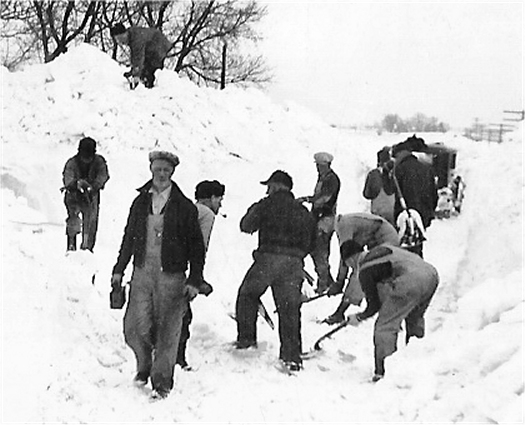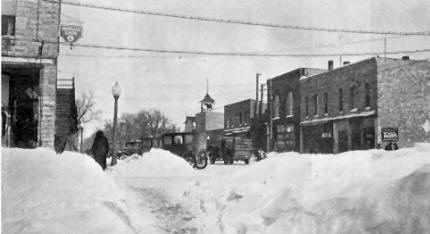 |
Some of America's most extreme weather occurred in 1935 and
1936. In fact, most of the decades records happened in these two years.
Forty percent of the states recorded the lowest yearly precipitation on
record, eleven states recorded the lowest one day temperature, while
twenty-six states recorded the their highest one day temperatures.
In the
Spring of 1935, the "Dust Bowl," was taking place in much of the
Great Plains. The affected areas were from Colorado to Kansas, to
Oklahoma. Sixty mile an hour winds caused dust storms. These
unusual weather conditions were happening during the "Depression Era"
when economic conditions were taking a terrible toll on America. |
*On Labor Day weekend, 1935, the strongest hurricane in history to
strike the U.S. made landfall in the Florida Keys. An incredible
barometric pressure of 26.35, a record that has not been broken,
accompanied the hurricane. The winds were estimated at 200 mile
per hour.
All across the northern section of the country, winter brought
bitter cold temperatures. New record snowfalls were recorded.
Missoula, Montana had a February total snowfall of 43 inches.
The West Coast experienced extreme rainfall.
Record cold temperature was registered in Great Fall, Montana with a
minus 49 degrees. Fargo, North Dakota remained below zero for
thirty-seven straight days.
Following the record snowfalls and cold temperatures, Spring 1936
brought severe flooding in the Middle Atlantic, Ohio Valley, and
Northeast.
The floods caused 270 million dollars of damage, and the lives
of 107 people.
Mother Nature wasn't finished yet. The tornado season
started in April, 1936. Seventeen tornados blew through northern
Mississippi, Tennessee, northern Alabama, and Georgia. Four
hundred and forty-six people were killed in rare nocturnal tornados.
It was a very hot summer! Some of the cities that
recorded record highs were Minneapolis, Minnesota-108 degrees, Fargo
North Dakota -114 degrees, Fort Smith Arkansas - 115 degrees, Tulsa,
Oklahoma - 117 degrees. On August 18, 1936, Iowa had its hottest
ever August day with the average high temperature for 113 reporting
stations of 106.5 degree. The summer heat was so intolerable,
that many families slept outside at night to escape the heat
of their houses.*
The following three photographs were taken in Humboldt County.
They provide a visual example of the amount of snow that fell
during "1936 Blizzard."

Rutland men shoveling snow.
February 6, 1936 - severe blizzard conditions over all of Iowa were the
toughest in modern history.
Blizzard - February 8-10, 1936 - Statewide. Heavy snow and
strong winds caused severe drifting.

Mrs. Tuttle and Mrs. Ruse pictured on a road near
Livermore
|

Photo of Gilmore City |
 |
Lake Park Iowa:
On February 6, 1936, a two-day blizzard stopped all activity in
the region. Temperatures dropped to minus 25 and the train was
held up in Worthington for nine days. The plows on the trains
had to barrel through the drifts at 35 to 40 miles per hour to get
through. the depot had to board up windows to prevent them
from breaking when the trains blew through.
Pierson Iowa:
Winter of 1936 - A blizzard struck Pierson and
the area February, tying up traffic and isolating the town. There
was no relief in sight of this snow and high winds for days to
follow. It filled up cuts and produced huge drifts that blocked
roads and even had the railroad at a halt. This cause depleted
supplies and many families had to risk walking into town to get
needed supplies that may or may not be available. Schools were shut
down indefinitely and shoveling produced snow piles ten to twelve
feet high in front of businesses.
The mail carrier could not deliver mail with horse and wagon due to
the high drifting and did his route
on foot. Doctors couldn't get to ill patient and the farmers had
to organize to drive in shifts to get the doctors around. It took
thirty-eight men and twenty horses to go eight miles in the
blizzard. The horses and men simply got mired down trying to get
through this harsh condition.
One
of our family stories was of my father having to walk from highway 169 to
Livermore on snow drifts that were as high at the telephone lines. I
always questioned his story, until I saw the following picture which
confirmed the story.

Photo taken in Ames, Iowa
*Source Information :
Intellicast Almanac
|





